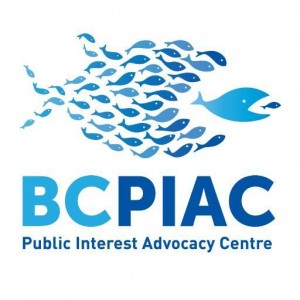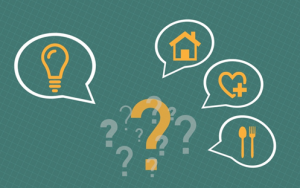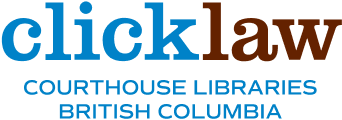
By Erin Pritchard
Staff Lawyer, BC Public Interest Advocacy Centre
In September 2015, BC Hydro filed a Rate Design Application (RDA) with the BC Utilities Commission (Commission). This means the Commission, BC Hydro and stakeholders will review rate structures (how BC Hydro charges customers for its services) and terms and conditions of service for residential, business and industrial customers.
In this proceeding, the BC Public Interest Advocacy Centre (BCPIAC) will ask the Commission to implement rate relief, emergency bill assistance, and specific terms and conditions for low income BC Hydro ratepayers.
BC Hydro rates are increasingly unaffordable for low income customers
About 170,000 (10%) of BC Hydro’s residential customers are “low income”, meaning they are living at or below Statistics Canada’s Low Income Cut Off (LICO). People living in poverty have a hard time paying for essential services such as electricity when their incomes are stagnant. Since electricity is essential to survival, energy bills can only be paid at the expense of competing household necessities, such as food and medicine.

BC Hydro residential electricity rates have increased by 47% in the last 10 years, and are on track to increase by another 10.5% in the next three years. Rates are projected to continue to rise significantly in future years as the government continues to order BC Hydro to build multi-billion dollar projects like the Site C dam without a full public review of those projects by the Commission. While rate caps are currently keeping BC Hydro rates artificially low, project expenditures will eventually be collected from ratepayers.
BC Hydro’s rate increases have far outpaced increases in provincial income and disability assistance rates and the BC general minimum wage over the same time period. Over the last 10 years, BC social assistance rates have only gone up by $100 or less (for a single person) and the BC general minimum wage by $2.45 an hour.
BC Hydro currently offers no rates or terms and conditions that specifically apply to low income customers. It offers two programs to its low income customers:
- Energy Savings Kits that include a few energy saving products which, if fully installed, might save $30 per year, and
- In more limited cases, energy efficiency home upgrades through BC Hydro’s Energy Conservation Assistance Program. This program is not available to BC Hydro customers living in apartments.
While such energy efficiency programs are important, they are not a stand-alone response to low income customers’ increasing inability to afford their power bills – they are only one element of what must be a comprehensive low income bill affordability strategy.
What is BCPIAC doing to help?
In the RDA, BCPIAC will ask the Commission to order that BC Hydro:
- implement a “lifeline rate” for low income BC Hydro residential customers, so that these customers can get basic electricity at a reduced price;
- introduce a low-income emergency bill assistance program of up to $500/year for low income households (this would be like a crisis grant, not intended to address ongoing bill affordability issues); and
- adopt terms and conditions for service that would apply to low income ratepayers, including policies that would allow:
- waiver of security deposits and the ability to build up a security balance over time;
- flexible payment arrangements, including modifications to the equal payment plan program;
- elimination of late payment fees;
- suspension of disconnections during cold weather periods and for customers using lifesaving medical equipment; and
- waiver of reconnection fees.
Ontario, Quebec and Manitoba offer bill assistance programs to low income electricity customers who are having difficulty paying their bills, and both Ontario and Manitoba are expanding these programs. These programs in other provinces provide good examples of what could be done in BC.
We will argue that the Commission has the ability to implement programs to assist low income BC Hydro ratepayers, and that in the face of significant rate hikes, doing so is in the public interest.
BCPIAC is making this request on behalf of the following coalition of groups that represent the interests of low and fixed income BC Hydro customers: the British Columbia Old Age Pensioners’ Organization, Active Support Against Poverty, BC Poverty Reduction Coalition, Council of Senior Citizens’ Organizations of BC, Disability Alliance BC, Together Against Poverty Society, and Tenant Resource & Advisory Centre.
How you can help:
We plan to put forward evidence about the increasing unaffordability of BC Hydro rates for low income residential ratepayers. If you have been disconnected by BC Hydro because you were unable to pay your bill, or you are low income and are falling behind on your BC Hydro bills, please contact BCPIAC at 604-687-3063 or support@bcpiac.com.
BC Hydro’s Rate Design Application can be found by clicking here [PDF].


I am a single senior living in a single family residential home in a
developed area of Squamish. My income qualifies me for premium
assistance for BC Medical Services Plan.*There is no Fortis natural gas services available at this address. This results in extreme hardship for me as incremental seasonal costs increase my BC HYDRO two-month billing amount by over 4 times the summer amount. June 4 to Aug 4, 2015 (all-in) $77.70 compares to Oct 3 to Dec 2, 2015 $295.91; $66 of this last billing is directly attributable to Step 2 rate change* EnerGuide Rating 81, Instant hot water, Thermostat setting occupied room 15 o; unoccupied room 10 o. I would like to instal an efficient wood-burning stove but this assistance is available for GAS only.
I hope this anecdotal information is useful to you in your actions for
adjustments to rates for low-income utility users. KEA